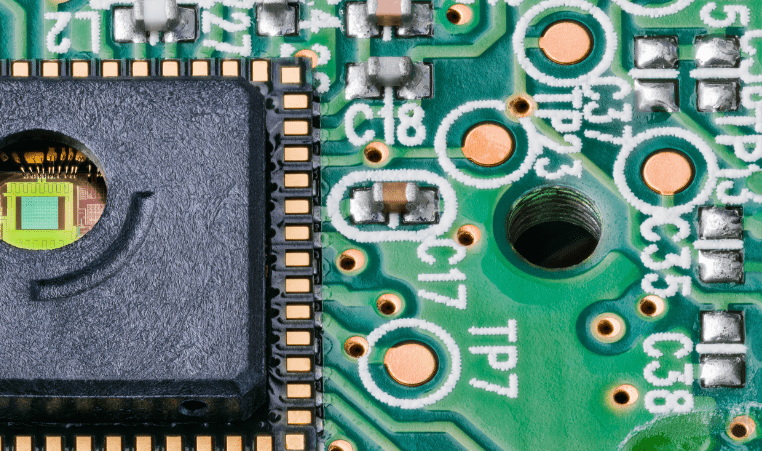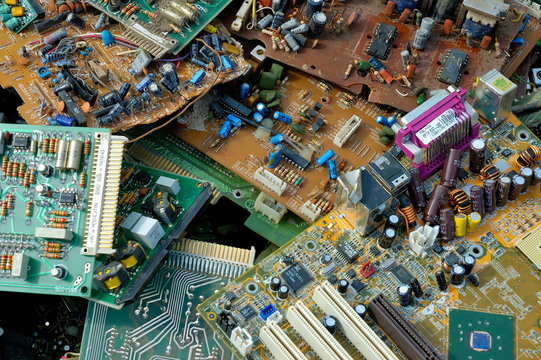Content Menu
● Understanding SMT Line Components
● Key Strategies for Optimization
>> 1. Efficient Layout Design
>> 2. Equipment Selection and Maintenance
>> 3. Automation Integration
>> 4. Staff Training and Development
>> 5. Lean Manufacturing Principles
● Continuous Improvement
>> Data Analysis and Control
>> Process Flow Optimization
● Conclusion
● FAQ
>> 1. What are common challenges in optimizing SMT lines?
>> 2. How can automation improve SMT line efficiency?
>> 3. Why is staff training important in SMT production?
>> 4. What role does maintenance play in SMT line optimization?
>> 5. How can lean manufacturing principles benefit an SMT line?
● Citations:
Surface Mount Technology (SMT) has revolutionized the electronics manufacturing sector, allowing for the production of smaller, lighter, and more reliable electronic devices. However, to fully harness the advantages of SMT, optimizing the setup of your SMT line for high-speed production is essential. This article explores various strategies and best practices to enhance the efficiency and effectiveness of your SMT line.

Understanding SMT Line Components
Before delving into optimization techniques, it is crucial to understand the key components of an SMT line:
- Solder Paste Printer: Applies solder paste to the PCB.
- Pick-and-Place Machine: Places components onto the PCB.
- Reflow Oven: Melts solder paste to create electrical connections.
- Inspection Systems: Ensure quality by detecting defects.
Each component plays a vital role in the overall efficiency of the SMT line.
Key Strategies for Optimization
1. Efficient Layout Design
The layout of your SMT line significantly impacts its efficiency. A well-designed layout minimizes material handling and reduces cycle times. Consider the following:
- Linear Flow: Arrange machines in a linear sequence to facilitate smooth movement of PCBs through the production process.
- Minimized Distance: Reduce the distance between machines to decrease transport time and potential errors.
- Adequate Space: Ensure there is enough space for maintenance and troubleshooting without disrupting production.
In addition, employing machine placement strategies that minimize idle time, such as group technology or parallel placement, can further enhance efficiency. This approach allows for better coordination among machines, leading to reduced waiting times and increased throughput[1].
2. Equipment Selection and Maintenance
Choosing the right equipment is critical for high-speed production. Factors to consider include:
- Performance Matching: Select machines that meet your specific production requirements, such as speed and precision.
- Regular Maintenance: Implement a proactive maintenance schedule to prevent unexpected downtimes. Regular calibration of machines ensures consistent performance.
Moreover, maintaining well-organized and properly stocked feeders can minimize changeover time and component shortages[1].
3. Automation Integration
Automation is a cornerstone of modern SMT lines. Consider integrating automated systems such as:
- Automated Material Handling: Use conveyors and robotic arms to reduce manual handling and improve speed.
- Real-Time Monitoring Systems: Employ IoT-enabled sensors to monitor machine performance and detect issues before they escalate.
Automation not only boosts production speed but also contributes to error reduction, reduces labor costs, and enhances flexibility within production lines[5].
4. Staff Training and Development
A skilled workforce is essential for optimizing your SMT line. Focus on:
- Comprehensive Training Programs: Provide regular training sessions on equipment operation, troubleshooting, and maintenance.
- Continuous Improvement Culture: Encourage employees to identify inefficiencies and suggest improvements through regular feedback loops.
Investing in ongoing education ensures that operators are familiar with the latest technologies and best practices, which can lead to significant improvements in production quality and efficiency[5].
5. Lean Manufacturing Principles
Implementing lean manufacturing principles can significantly enhance efficiency by minimizing waste. Key practices include:
- Value Stream Mapping: Analyze each step in your production process to identify bottlenecks and areas for improvement.
- Kaizen Events: Organize regular improvement workshops where teams can brainstorm solutions to identified problems.
Lean principles focus on reducing waste, minimizing setup times, and improving overall workflow[8]. By fostering a culture of continuous improvement, manufacturers can adapt quickly to changing demands while maximizing productivity.

Continuous Improvement
Optimization is not a one-time task but an ongoing process. Regularly assess your SMT line's performance using metrics such as throughput, defect rates, and cycle times. Utilize data analytics tools to gain insights into production trends and make informed decisions about necessary adjustments.
Data Analysis and Control
Modern SMT lines feature sophisticated software that collects, analyzes, and applies production data effectively. Key capabilities include:
- Traceability: Barcodes and data collection track boards and components through each process step.
- Data Mining: Statistical tools find trends and correlations in production data to guide optimization efforts.
- Closed-Loop Control: Measurements and metrics are fed back into the system to adjust parameters automatically for improved performance[2].
By leveraging these technologies, manufacturers can create a self-correcting system that continuously improves efficiency while maintaining quality standards.
Process Flow Optimization
Reviewing and optimizing the process flow is essential for ensuring that each step is necessary and efficient. This includes:
- Arranging components in logical sequences based on their placement on the PCB.
- Standardizing operating procedures that reduce operator errors and wasted time during assembly[6].
Additionally, preparing components and feeders in advance ensures stability in supply chains while avoiding costly shortages during production runs[6].
Conclusion
Optimizing your SMT line setup for high-speed production involves a multifaceted approach that includes efficient layout design, careful equipment selection, automation integration, staff training, lean manufacturing principles, data analysis, and continuous improvement processes. By continuously monitoring performance metrics and fostering a culture of improvement within your organization, manufacturers can achieve significant gains in efficiency, product quality, and overall competitiveness in the electronics market.

FAQ
1. What are common challenges in optimizing SMT lines?
Common challenges include long changeover times between product variants, frequent machine jams or crashes, high rework rates after soldering, difficulty balancing throughput with inventory levels, and lack of standardized procedures.
2. How can automation improve SMT line efficiency?
Automation enhances speed by reducing manual handling, minimizes errors through consistent processes, allows for real-time monitoring of machine performance, and optimizes material flow within the production line.
3. Why is staff training important in SMT production?
Well-trained staff are essential for operating complex machinery efficiently, troubleshooting issues quickly, maintaining quality standards, and contributing to continuous improvement initiatives within the production process.
4. What role does maintenance play in SMT line optimization?
Regular maintenance prevents unexpected machine failures that can halt production; ensures equipment operates at peak performance levels; extends machinery lifespan; ultimately contributes to higher overall productivity.
5. How can lean manufacturing principles benefit an SMT line?
Lean manufacturing principles help identify wasteful practices within the production process; streamline workflows for greater efficiency; reduce costs associated with excess inventory or rework; enhance overall product quality through continuous improvement efforts.
Citations:
[1] https://txjpcb.com/the-best-practices-for-smt-line-balancing-and-optimization/
[2] https://prototypepcbassembly.com/optimizing-smt-production-lines-for-maximum-efficiency/
[3] https://www.smtfactory.com/Optimizing-Efficiency-Strategies-for-A-Smooth-SMT-Line-Production-Process-id47463586.html
[4] https://blogs.sw.siemens.com/valor-dfm-solutions/how-to-optimize-pcb-design-for-the-smt-assembly-process-flow/
[5] https://www.adoptsmt.com/en/efficiency-enhancement-in-smt-manufacturing/
[6] https://www.smtneoden.com/news/how-to-effectively-improve-the-production-efficiency-of-pcb-smt-machine/
[7] https://www.circuitinsight.com/pdf/Modeling_SMT_Line_Improve_Throughput_smta.pdf
[8] https://www.electronicspecifier.com/news/surface-mount-technology-best-practice-guide
[9] https://www.smthelp.com/methods-and-measures-to-improve-the-production-efficiency-of-smt-production-line
[10] https://jhdpcb.com/blog/efficient-smt-assembly/




















